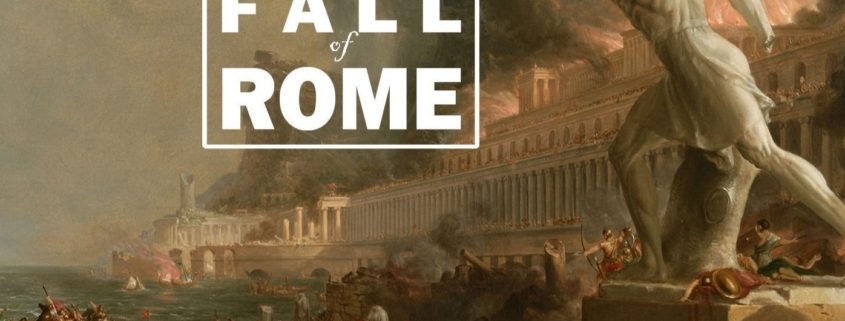The Fall of Rome
The Start of the End
On January 23rd, AD 393, Roman Emperor Theodosius I (the Great) officially made his son Honorius co-emperor in the west. Honorius was eight years old at the time.
Theodosius died two years later, and Honorius was left under the control of General Stilicho. Unfortunately, the two were equally self-centered and ineffective rulers. Even when Honorius got rid of Stilicho in AD 408 he was unable to consolidate his own power. Province after province fell to northern barbarians and usurpers, culminating in 410. Alaric the Visigoth swept down the Italian peninsula, right past Honorius’ capital at Ravenna, and plundered the city of Rome.
The sacking inspired a number of wild stories. It said that when Honorius heard the news he cried out in despair, only to bounce right back when he heard it was merely the city of Rome that had fallen, and not his beloved pet chicken named Rome. This story is told by Procopius, who lived almost a century and a half after Honorius, and is impossible to verify. Regardless, due to both Honorius’ ineptitude and other factors, by the end of the century Rome would no longer rule any part of western Europe.
Historically…isn’t it more complicated than that?
The fall of Rome isn’t any one event. It’s a long and complicated transition period that took the better part of the fourth and fifth centuries. Some scholars argue had its roots as far back as Diocletian’s experimental reforms in the late 200s. By 410, the empire had been ruled from cities other than Rome for nearly a century (mostly Milan and Ravenna). But even if political power had abandoned her, Rome remained a rich and heavily populated cultural center. Her fall struck a deep chord, not only with later historians but with everyone living at the time, from great thinkers and common people. Most famously, St. Augustine was troubled enough by the sack to write City of God, which argues good Christians have a city of their own waiting in heaven, far away from the turbulence of earth where their chosen capital could fall to pagans.
What does this have to do with ECC?
ECC bundles our Roman items into certain time periods. The Fall of Rome is just one (and includes other rulers like Arcadius, Gratian, Valens, etc)! All rulers in a given category can have a note on their NGC label and a story card with the given theme if specified with your order. Other popular eras include the Age of Chaos and the House of Constantine.
More specifically, we have coins of Theodosius I and Honorius himself in stock, as well as packaged items that give an overview of the entire time period.




